Mulligans
General Mulligans
Playing/Multiplying your Dreadsteeds is a tempo loss you should focus on compensate therefore you should mulligan for early game minions and removals. In the case of you having a good early game hand you can also confidently keep Dreadsteed.
Aggro Mulligans
Against aggressive decks I would also advise to keep board clears, which can mean a huge swing.
Control Mulligans
Against control decks keeping Voidcaller for temposwings and Loatheb as a ‘tech’ card for advantageous turns.
This is a Dreadsteed deck focusing on grinding out your opponent.
I have been playing Dreadsteed decks since the beginning of League of Explorers and have been comparing the versions ever since. The lack of consistency in Reno Jackson decks made having a board full of Dreadsteeds a rare situation and other decks which focused around Dreadsteed were also designed to have a bunch of ‘active’ cards, in my playtesting it felt like playing/multiplying your Dreadsteed was a huge tempo loss and in a way countering your own deck.
You see playing Dreadsteeds meant ‘outvaluing’ your opponents to me, meaning that your goal with this kind of a deck should try to compensate the low tempo in the with ‘grindy’ cards, which lengthen the game so that you are sure to get the most out of your Dreadsteeds.
General Strategy
- Silence-Effects are quite rare, so playing a standalone Dreadsteed is not a bad idea, against Priest decks thou this is a sacrilege; Cards like Cabal Shadow Priest and Shadow Madness could destroy your whole game plan!
- Sylvanas Windrunner is a card which is run in almost every control and/or N’Zoth deck and because of her deathrattle she requires a little bit more attention.
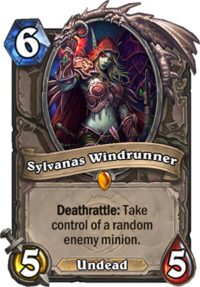
In a situation where you have a board of several Dreadsteeds and your opponent drops his Sylvanas Windrunner, there are several strategies you can follow:a) If you don’t want you opponent to steal one of your Dreadsteeds, you have to pay attention to the order in which the deathrattles will trigger. The deathrattle of an attacking minion triggers first, so killing a Sylvanas Windrunner by attacking it with your Dreadsteed will mean that she will steal your Dreadsteed. Also the deathrattle of the earliest summoned minion triggers first, so killing all your Dreadsteeds while Sylvanas Windrunner is on board and clearing the board afterwards with Hellfire or Twisting Nether will kill your Dreadsteeds simultaneously with Sylvanas Windrunner, as a result her deathrattle effect will trigger before the Dreadsteeds resummon themselves, therefore deny the stealing.
b) If your opponent is obviously playing a N'Zoth deck you could also try to sabotage his N'Zoth turn in which he normally tries to summon several valuable deathrattle cards, like Sludge Belcher, Tirion Fordring and Cairne Bloodhoof, by letting him steal one of your Dreadsteeds so that he would get them instead of the cards which he planned to resurrect, which could mean stealing his win condition, on the other side thou you also create a new win condition for him, which can also be quite negative if you were still trying to stabilize.
- Closing out a game can be a struggle sometimes, especially against Control decks like Priest and Warrior, holding cards like Dark Bomb and Hellfire to burst down your opponents should be considered, likewise Mal'Ganis serves the same purpose.
- You will have a hard Match-Up against Combo decks such as Freeze Mage and Murloc Paladin, so you should use your resources thoughtfully. Lord Jaraxxus should not be played against any deck that tries to combo you down, your aim should be getting him on board through a Voidcaller.
Against Freeze Mage every card in your deck that can heal should be used fully and not as a tempo play, this deck has a total healing of 29 (+ 14 possible health from Lord Jaraxxus himself), using Loatheb after popping your opponents Ice Block is also advisable.
Against Murloc Paladin cards which have a taunt ability (like Sludge Belcher) or generate it (like Defender of Argus) should be used in the later stages of the game were your opponent is likely to OTK you with his Anyfin Can Happen, ideally you can combo your Sludge Belchers with Kel'Thuzad.
Reasoning Behind Some Card Choices
2x Mortal Coins
With this card you can multiply your Dreadsteeds and add an additional damage to your AoE’s,
while drawing a card;
There are a lot of aggressive Decks in Wild so this card has a high chance of hitting a good target.
2x Demonwrath
I prefer this card instead of Hellfire mostly because of the damage you inflict to yourself with Hellfire and your Dreadsteeds don’t get killed by this AoE, so that you can go through a taunt minion and kill the other minion that is being protected, which is not possible with Hellfire.
This card obviously is not strong In the Zoo-Warlock Match-up, but still kills enough minions in my opinion.
Kel'Thuzad + Baron Rivendare:
Having both of these cards in your deck raises the consistency of you multiplying your Dreadsteed s, which is mandatory for you to win. Combining any of those two cards with a minion like Sludge Belcher is a strong move.
Flexible Card Spots
This deck is mostly designed to have enough sustaining against aggressive decks and strong defensive mechanics. If you are facing more Control oriented decks or just want to add variety.
I propose to cut these cards primarily:
- 2nd Demonwrath
- 2nd Imp Gang Boss
- 2nd Sacrificial Pact & Mortal Coil
Cards To Tinker With
Against Control Decks
- 2nd Siphon Soul
- 2nd Twisting Nether
- Sideshow Spelleater
- Elise Starseeker
- Nexus-Champion Saraad
- Medivh, the Guardian
- Alexstrasza
Against Aggressive Decks
Possible Fringe and/or Inconsistent Additions




















/rating_1_off.png)
/rating_2_off.png)
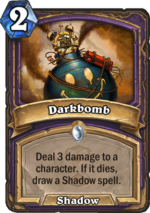
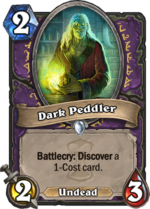
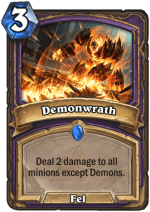
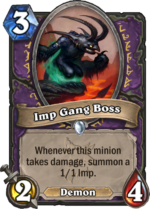
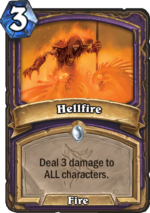
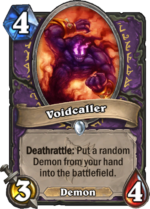
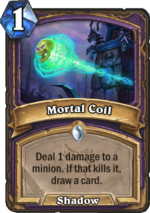

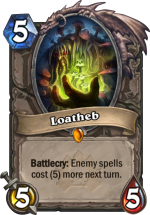
My favourit deck in hearthstone. Really.